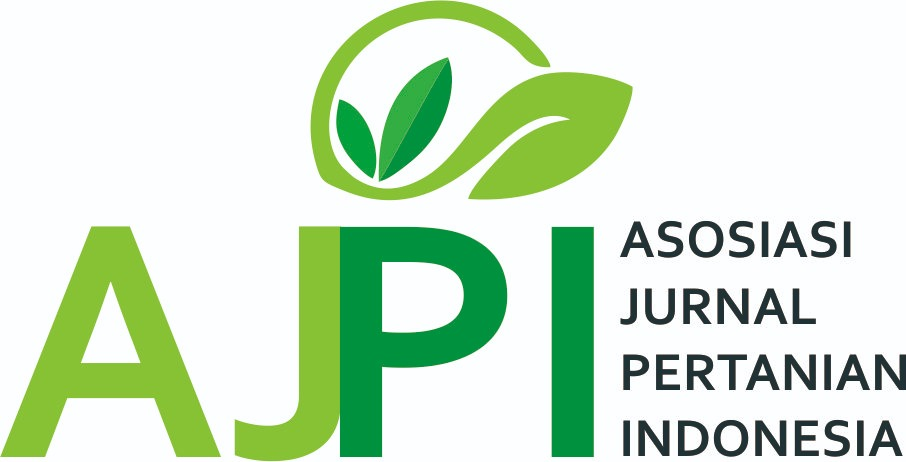APLIKASI RHIZOBIUM DAN FUNGI PELARUT FOSFAT DALAM RANGKA MENINGKATKAN SERAPAN HARA N DAN P PADA BEBERAPA GENOTIPE KEDELAI DI ULTISOLS
Abstract
One of the alternative technologies sould be inproved is biologic fertilizer technology in form of inoculan jasad renik like nitrogen hinder bactery (BPN), and phosphate dissolvant fungi (FPF).The pupose of this research is to find the effect of the giving of biologic fertilizer of rhizobium an phosphate dissolvant fungi toward the growth and result of soya bean plant in Ultisols abd find the efectivity both rhizobium and phosphate dissolvant fungi toward soya bean growth. The try out used complete group random design (RAKL) which was replayed there times. As a main partition was soya bean genotives those are Slamet, 25EC, 19BE, and 13ED. And as another partition was fertilizer treatmen, that was a control (whithout fertilizing), by using NPK in dose suggestion and whithout inokulant, FPF+Rhizobium strain KLR and FPF+Rhizobium strain TER, from the two factor s which researshed, it was gotten it treatment combination which each of them werw replayed three time, finnally found 48 measures of try out. The result of the research found that the fertilizer of FPF+Rhizobium strain KLR and TER are able to increase yhe weight of dry plant, the rate of N web, the rate of P web, hara N absorption, fertilizer relative efficiency (ERP), relative efficiency of the rate of N web, relative efficiency of the rate of P web, and the result of soya bean (amount of seed and weight of seed). Genotive 19BE which is given biologic fertilizer of FPF+TER is able to produce hight seed weight and get increasing production 175% from the before production.Keywords : rhizhobium, phosphate dissolavant,soya bean
Downloads
Author retains the copyright and grants the journal the right of first publication of the work simultaneously licensed under the Creative Commons Attribution-ShareAlike 4.0 License that allows others to share the work with an acknowledgement of the work's authorship and initial publication in this journal













